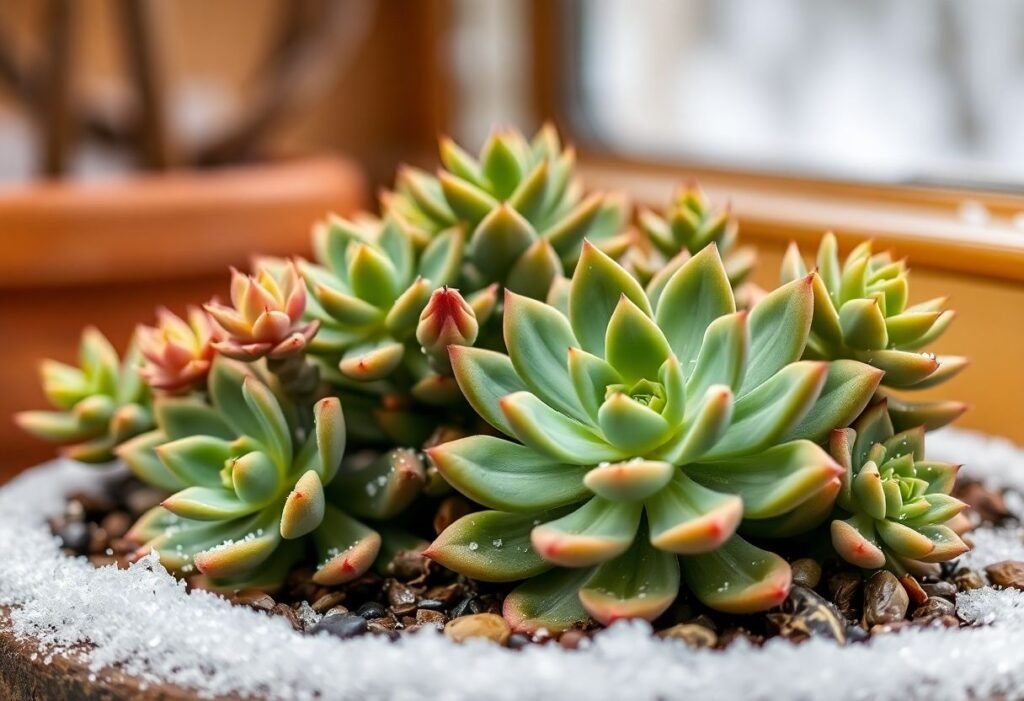Why Succulents Make Great Indoor Plants
Succulents are celebrated for their significant drought resistance and ability to store water, allowing them to flourish in a wide array of environments, including inside our homes. Their variety of shapes and colors not only enhances their practicality but also adds aesthetic appeal. Therefore, succulents in winter provide an excellent opportunity to incorporate a splash of life and color into our houses, which often feel dreary and lifeless during this time.
Creating Optimal Conditions for Winter Succulents
The colder months present specific challenges. Ensuring adequate lighting is crucial, so position your succulents near a window that receives plenty of natural light. Maintaining an optimal room temperature is also essential; aim for temperatures not to fall below 50°F. Succulents in winter require moderate watering, which means only watering when the top layer of soil is completely dry.
Choosing the Right Soil for Succulents
During winter, the type of soil in which your succulents grow becomes particularly important. Opt for a well-draining mix to prevent root rot. Combinations of sand, perlite, and potting mix work well to create an environment conducive to growth and development. Adjusting the soil type to suit different succulent varieties will ensure they thrive even amidst harsh winter conditions.
Protecting Against Pests
While succulents are generally hardy, winter can expose them to pests like aphids and spider mites. Regularly checking your plants and their leaves will help you identify any issues early. If pests do appear, consider using natural treatments or specialized products available at garden centers. Succulents in winter require vigilant monitoring to avoid unpleasant surprises.
Nourishing Your Succulents in Winter
Many believe that fertilization is unnecessary during winter, yet succulents can benefit from light feeding in times of active growth. Diluted mineral fertilizers can be applied every few weeks. However, caution is essential; too many nutrients can do more harm than good. It’s best to feed succulents in winter in moderation and consistently.
Succulents to Avoid During Winter
Not all succulents are well-suited for winter conditions. Some varieties, like prickly pears, may not survive in cooler temperatures. It is wise to research which of your plants can endure the chill and consider bringing more sensitive succulents indoors where they can enjoy a more welcoming environment.
Conclusion
In conclusion, caring for succulents in winter allows us to enjoy their beauty throughout the colder months when outdoor landscapes are often barren. By following the tips outlined above, you can create ideal conditions for your plants, ensuring they continue to thrive beautifully. Don’t hesitate; bring home a few succulents today and let a touch of green liven up your space!
Disclaimer
The information provided in this article is for informational purposes only. It is advisable to consult with a gardening expert before making decisions regarding plant care and maintenance.

















